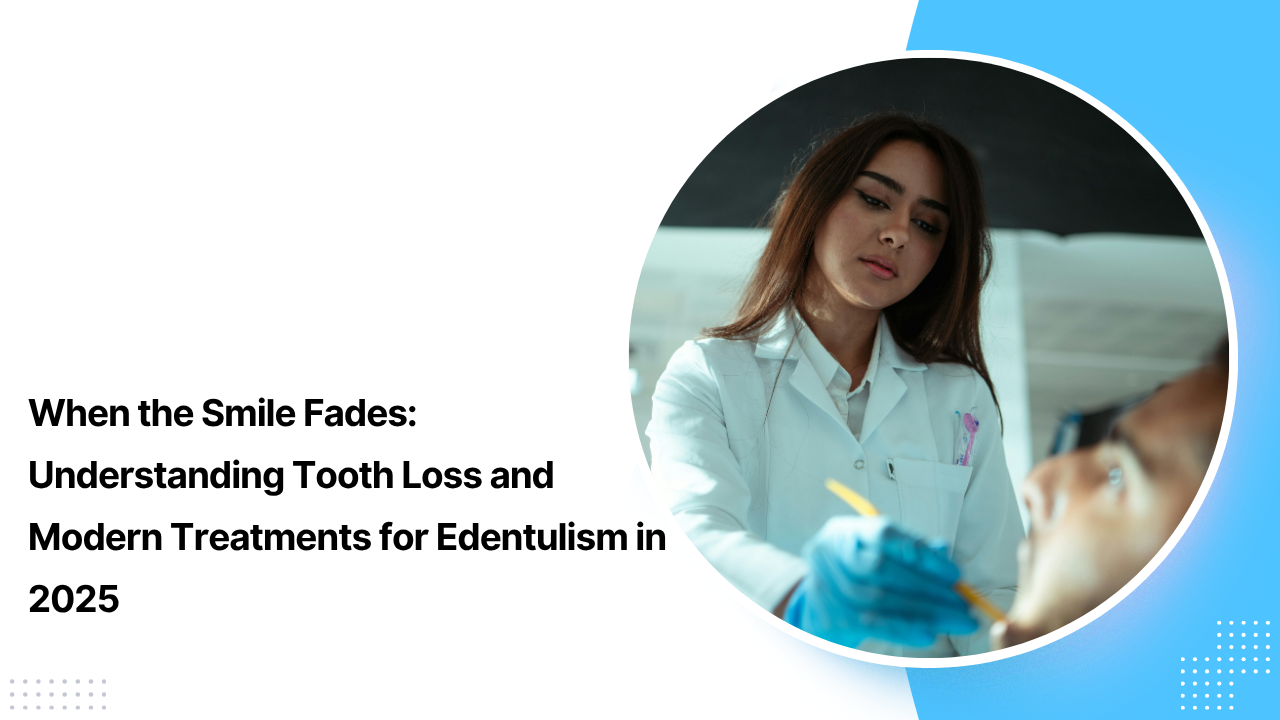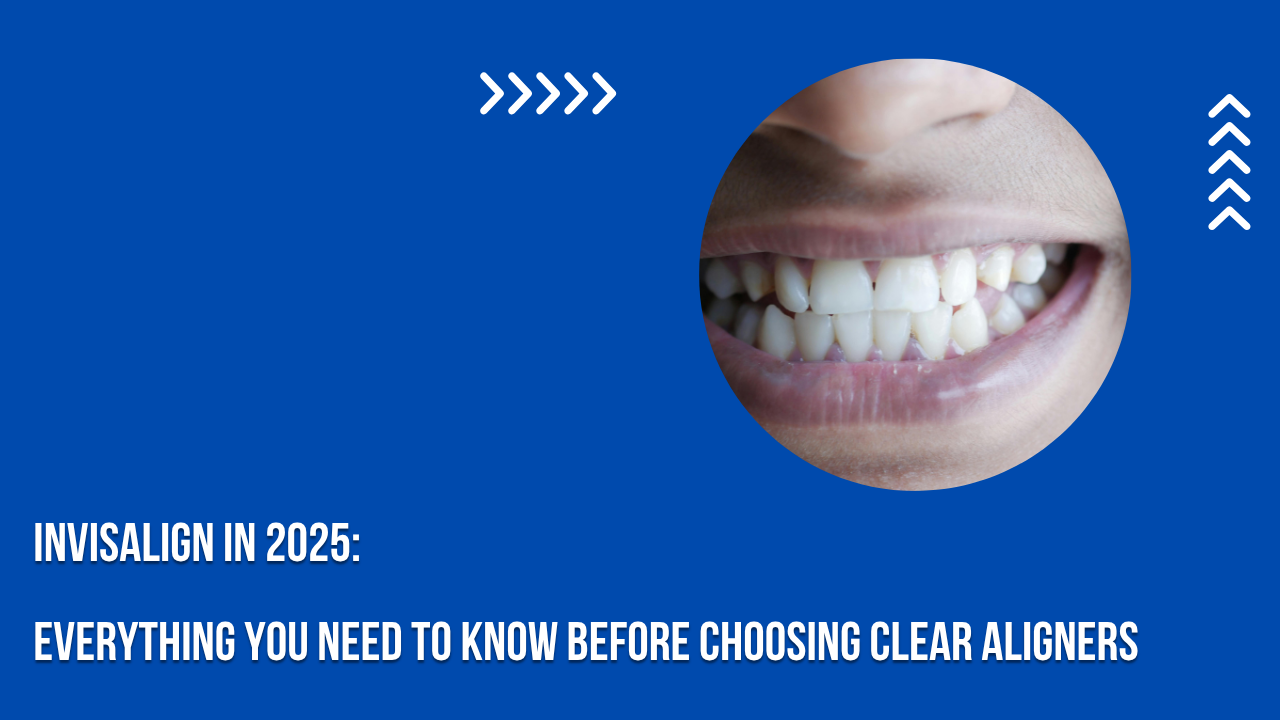Does your jaw make a clicking sound when you chew? Or have you been experiencing headaches upon waking and are unsure of the cause? You might attribute it to stress, lack of sleep, or temporary discomfort. But what if your jaw is signaling a more significant issue?
Welcome to the realm of TMJ Disorders—a condition that impacts millions worldwide but is often misinterpreted. By 2025, as awareness of holistic health increases, TMJ and orofacial pain are finally receiving the recognition they deserve.
This blog will guide you through the true nature of TMJ Disorder, the symptoms to be aware of, and how contemporary orofacial pain management is helping individuals reclaim their lives, without resorting to surgery or unnecessary trial and error.
Understanding TMJ and Its Importance
The temporomandibular joint (TMJ) is the point where your jawbone connects to your skull, located just in front of your ears. You rely on it for nearly everything: eating, speaking, yawning, and laughing. It’s one of the most frequently used joints in your body.
Now, consider what happens when something goes awry with this joint—those simple everyday actions can become uncomfortable or even painful. This is the essence of TMJ Disorder (or TMD): pain, dysfunction, or discomfort in your jaw joint and the muscles that control it.
TMJ Disorder: A Contemporary Health Issue
In our fast-paced society, TMJ problems are becoming increasingly prevalent—not just among older individuals.
Here’s why TMJ pain is particularly significant in 2025:
– Increased screen time: With more people working from home or gaming for extended periods, poor posture is affecting the neck and jaw.
– Stress and anxiety: The rise in clenching and grinding (especially at night) is linked to the mental health challenges of the post-pandemic era.
– Dietary habits: Many people are chewing more gum or consuming hard, crunchy snacks, which can unknowingly put strain on their jaws.
– Teeth grinding (Bruxism): This is now more closely associated with lifestyle factors and sleep apnea than ever before.
As a result, TMJ is no longer a minor issue—it has become a widespread concern in oral and musculoskeletal health.
How to Know If You Have TMJ Disorder
While TMJ pain can sometimes be mistaken for a toothache or ear infection, certain symptoms point directly toward TMD:
Common Symptoms of TMJ Disorder:
| Symptom | What It Feels Like |
| Jaw pain or tenderness | Persistent or sharp discomfort near the ears |
| Clicking or popping sounds | Audible noises when you open or close your mouth |
| Limited jaw movement | Difficulty or pain when trying to open wide |
| Facial pain or swelling | Aching on one or both sides of the face |
| Headaches | Often starting around the temples and radiating outward |
| Ear-related discomfort | Fullness, ringing, or pain in the ears (without infection) |
| Lockjaw | Your jaw temporarily “freezes” in place |
It’s important to note that not all sounds or jaw discomforts mean you have TMD. But persistent, worsening symptoms should not be ignored.
Orofacial Pain: Beyond Just Jaw Issues
Orofacial pain encompasses a wide range of discomfort in the face, mouth, head, and neck. While TMJ disorders are included in this category, it also encompasses:
– Neuropathic pain (resulting from nerve damage or irritation)
– Myofascial pain (caused by muscle tightness or trigger points)
– Headaches linked to dental problems
– Referred pain originating from the neck or sinuses
By 2025, orofacial pain is increasingly recognized as a multi-system issue rather than solely a dental concern. This understanding necessitates a more comprehensive and integrative approach to management.
Contemporary Methods for Managing TMJ and Orofacial Pain
The era of relying solely on surgery or bite guards for TMJ treatment is over. Nowadays, conservative, evidence-based therapies are the standard and have proven to be more effective than ever.
Let’s explore the most reliable and current methods for addressing TMJ and facial pain.
1. Behavioral and Lifestyle Changes
Many patients are unaware that minor habits can lead to significant issues. Dentists and TMJ specialists now focus on identifying these triggers:
– Clenching teeth during work or sleep
– Chewing predominantly on one side
– Poor posture while using devices
– Nail biting or chewing on various objects
Treatment begins by tackling the underlying causes rather than just alleviating the symptoms.
2. Physical Therapy & Jaw Exercises
Physiotherapy has become a cornerstone in managing TMJ:
| Exercise | Purpose |
| Jaw stretches | Improve mobility |
| Postural training | Align head, neck, and spine |
| Resistance exercises | Strengthen jaw muscles |
| Trigger point therapy | Release tight muscle knots |
TMJ-specialized therapists design regimens that can be done at home with minimal tools. In many cases, patients report 60–80% improvement within a few months of regular therapy.
3. Splints and Orthotic Devices
Custom oral splints or night guards are effective in alleviating teeth grinding and jaw clenching. These devices:
– Align the jaw in a more relaxed position
– Prevent additional joint damage
– Decrease muscle fatigue
Note: It is advised against using over-the-counter mouth guards, as improper fitting can exacerbate symptoms.
4. Laser and Ultrasound Therapy
With advancements in dental technology, low-level laser therapy (LLLT) and ultrasound treatments are now utilized for pain relief and tissue healing.
– Laser Therapy: Helps reduce inflammation and promotes cell repair.
– Ultrasound: Eases deep muscle tension and enhances blood circulation.
These methods are non-invasive, painless, and do not involve medication, making them suitable for long-term application.
5. Botox for TMJ (Yes, Really!)
Botulinum toxin (Botox) has received FDA approval for certain orofacial pain and TMJ treatments. It functions by:
– Temporarily paralyzing hyperactive jaw muscles
– Decreasing clenching and grinding
– Alleviating tension headaches
When used judiciously and administered by qualified professionals, Botox is a safe and effective solution for individuals with chronic TMJ issues.
6. Mind-Body Approaches
There is a strong connection between mental health and physical pain. Many TMJ patients find relief through:
– Cognitive Behavioral Therapy (CBT)
– Biofeedback methods
– Meditation and relaxation techniques
These approaches not only help manage stress but also lessen the severity and frequency of pain episodes. Recent research from 2025 indicates that effective stress management can lead to quicker recovery from TMJ.
7. Minimally Invasive Procedures (As a Last Resort)
If conservative treatments are ineffective, newer methods such as arthrocentesis (joint flushing) or arthroscopy may be employed. These techniques involve small incisions and result in less trauma compared to traditional surgery.
Surgery is infrequently necessary today, but it may still be required in cases of complex joint dislocations or bone degeneration.
Prevention is Key
Here are some habits approved for 2025 that can help maintain jaw health and keep your orofacial muscles relaxed:
– Avoid excessive chewing of gum or ice
– Practice good posture while working
– Use ergonomic chairs and adjust your screen position
– Consider wearing a nightguard if you grind your teeth
– See your dentist at the first sign of jaw pain
– Refrain from opening your mouth too wide (like when eating large sandwiches)
Managing TMJ Disorder—Act Early
A common misconception about TMJ is that it will resolve on its own. However, if left untreated, TMJ can result in:
– Chronic headaches
– Worn teeth
– Facial asymmetry
– Anxiety or sleep issues
– Difficulty with eating and speaking
With early detection and appropriate treatment, most patients can fully recover without the need for surgery.
Final Thoughts: Don’t Dismiss the Pain
If your jaw clicks, locks, or hurts—or if you’re experiencing unexplained facial pain—it may be time to explore TMJ Disorder and orofacial pain treatment.
The positive news? You don’t have to endure pain or rely on painkillers. Advances in modern dentistry and physiotherapy can enhance your comfort, confidence, and overall quality of life.
At Dr. Varun’s Smile World, we focus on holistic, non-invasive TMJ care. Our method integrates advanced diagnostics, personalized therapy, and patient education to help you regain a pain-free smile.




